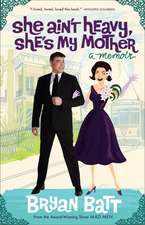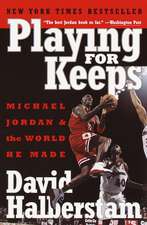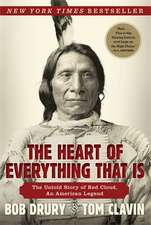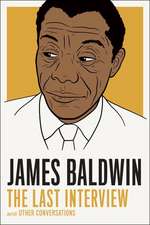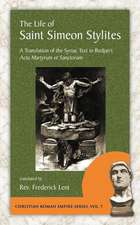Katie: The Real Story
Autor Edward Kleinen Limba Engleză Paperback – 31 aug 2008
A no-holds-barred account of the rise—and dramatic stumble—of a media icon.
In this probing portrait of a struggling news queen, bestselling author Edward Klein rips away the mask that has hidden the many faces of Katie Couric: the strong, independent woman and the needy wife and lover; the grieving widow famed for her kindness to others and the fiercely competitive diva; the consummate television interviewer and the stumbling network anchor.
Drawing from scores of interviews with people who have never spoken openly about Couric before, Katie: The Real Story absorbingly chronicles Katie’s rise to the top—from her early days at CNN to her nightly spot on CBS. You’ll read about:
Katie and her husband, Jay Monahan: “Jay had come to believe that the only thing that stood between Katie and divorce was her fear of negative publicity.”
Katie’s diva behavior at CBS: “A technical problem left Katie standing without a script. . . . As soon as the red light on the top of the camera went off, she screamed. One of the executives said, ‘Just a minute, Katie; the reason you make $15 million a year is to carry off these little glitches like a pro.’”
Katie and her parents: “She constantly sought [their] approval, but . . . [they] were better at telling her what she had done wrong than what she had done right.”
Katie and Matt Lauer: “Matt had privately told several executives at NBC that he would quit his job if they signed up Katie for another four years.”
Preț: 91.27 lei
Nou
Puncte Express: 137
Preț estimativ în valută:
17.47€ • 18.98$ • 14.68£
17.47€ • 18.98$ • 14.68£
Carte tipărită la comandă
Livrare economică 22 aprilie-06 mai
Preluare comenzi: 021 569.72.76
Specificații
ISBN-13: 9780307353511
ISBN-10: 0307353516
Pagini: 282
Ilustrații: 1 8-PAGE 4-COLOR INSERT
Dimensiuni: 130 x 201 x 18 mm
Greutate: 0.23 kg
Editura: Three Rivers Press (CA)
ISBN-10: 0307353516
Pagini: 282
Ilustrații: 1 8-PAGE 4-COLOR INSERT
Dimensiuni: 130 x 201 x 18 mm
Greutate: 0.23 kg
Editura: Three Rivers Press (CA)
Notă biografică
EDWARD KLEIN is the author of six consecutive New York Times bestsellers, including The Truth About Hillary, The Kennedy Curse, and Farewell, Jackie. A former editor in chief of The New York Times Magazine, he is a frequent contributor to Vanity Fair and Parade.
Extras
Part I
"Let Them Know You're Here!"
Chapter One
The Stuff of Legend
Katie Couric was in tears.
"I'm going to be fired!" she said.
It was Thanksgiving week in 1980, and Katie was in CNN's brand- newWashington bureau on Wisconsin Avenue. She was seated on a big cardboard packing box (most of the office furniture hadn't arrived yet), pouring out her heart to Jean Carper, the network's medical correspondent.
"Can you believe it, Jean?" she said. "They're going to fire me!"
Katie was a small fireplug of a woman (five-foot-two on a good-posture day), and from her perch on the packing box, her feet barely reached the floor. Thanks to her diminutive size, bubbly personality, and a wide mouth that revealed a set of tiny, childlike teeth, Katie could have been mistaken (and often was) for a high school cheerleader.
Nearly six months before-on June 1, 1980-Ted Turner and a handful of veteran journalists had launched the country's first twenty-four-hour-a-day cable news network, and these tough newsmen had trouble taking the girlish Katie seriously. It wasn't that she lacked the smarts or get-up-and-go. On the contrary, Katie was a ball of energy, an entry-level VJ (or video journalist) who was willing to work for $3.35 an hour-25 cents above the federal minimum wage. She came into the CNN Washington bureau on her days off and volunteered to run cameras, write scripts, and produce live stand-ups for correspondents like Jean Carper.
Jean had taken a shine to Katie and was distressed to hear that her protégée was going to be fired. The ax couldn't have fallen at aworse time. It was the beginning of the holiday season, and Katie was getting a pink slip instead of the Christmas promotion she had been hoping for. It looked as though Katie was all washed up in the television news business at the tender age of twenty-three.
"Jean," Katie pleaded, "what am I going to do?"
"Who told you you're getting fired?" Jean asked.
"Stuart," said Katie.
She was referring to Stuart Loory, the managing editor of CNN's Washington bureau.
"Why would Stuart do a thing like that?" Jean asked."I've told him-every time you've gone out to help me produce a segment, you've been a real asset."
Katie hadn't confided in Jean Carper that she didn't want to be a producer-someone whose name flashed on the screen for a split second during the credit roll at the end of a show. She had bigger dreams.She dreamed of being a star, and not just a relatively minor star like Jean Carper, but a major star, the biggest kind of star, an anchor at a major network with a show of her own.
Katie had been obsessed with this dream since college; in fact, she once told a college boyfriend that her goal was to become the next Barbara Walters, who at the time was co-anchoring ABC's World News Tonight with Harry Reasoner. As soon as Katie received her degree in American studies from the University of Virginia, she talked her way into her first job in TV journalism-as a desk assistant in the Washington bureau of ABC News.
"My first day at ABC," she recalled in an interview with Washingtonian magazine, "Sam Donaldson came into the newsroom, jumped on a desk, and started singing 'K-K-K Katy.'"
During her brief stint at ABC, Katie was responsible for making coffee, answering phones, and getting ham sandwiches for anchorman Frank Reynolds.
"It was the most humiliating job I ever had," Katie said.
A few months later, she switched to CNN, because advancement at the fledgling cable network was likely to come a lot quicker than at ABC. Ever since then, she had been pestering CNN's Washington bureau chief, Stuart Loory, to give her a shot on-camera. But Loory, a hard-bitten newsman who had been managing editor of the Chicago Sun-Times, didn't think Katie had the right stuff to become a reporter.
To begin with, Katie suffered from stage fright. In front of a camera, her voice shook, her hands fluttered, her nose ran, and she stumbled over words. Her high-pitched, untrained voice didn't match the aura of grave moral authority that the startup network was striving so hard to achieve. Her looks didn't help, either. The simple truth was, Katie didn't fit the mold of CNN's female anchors-pretty young things with long blonde hair. Katie might be cute, but she wasn't conventionally beautiful, and her mop of dark brown hair didn't add much to the overall package.
Even so, Katie had been given several opportunities to prove herself on air.
"One morning, an anchor in the Washington bureau failed to show up, and the producer running the show put Katie on in his place," recalled Reese Schonfeld, who had cofounded CNN with Ted Turner and was its first CEO. "I got a call from one of the guys on the newsdesk in Atlanta. 'Hey, look, they've got Katie on,' he told me. I turned on the TV and, sure enough, there was Katie, white-faced and scared stiff, and looking all of fourteen. I called the producer in Washington and told him, 'Never put anyone on the network without first asking me or the producer in Atlanta.'"
Reese Schonfeld's orders had the force of law at CNN, and everyone interpreted his words to mean: Never put Katie on the air again. In the face of such an edict, Katie's chances of becoming an on-airpersonality at CNN-much less an anchor-were nil. And now, it appeared that Stuart Loory had sealed her fate by giving Katie her walking papers.
***
Jean Carper placed a consoling hand on Katie's shoulder.
"Let me see what I can do," she said.
"Oh, would you, Jean?" Katie said. "I'd be so grateful."
"I'll call Reese."
Jean Carper didn't waste any time making good on her promise to intervene with Reese Schonfeld, the man who ran CNN on a day-to-daybasis.
"Katie's in tears," Jean told Schonfeld when she reached him on the phone in Atlanta. "She's crying because Stuart Loory's about to fire her. I think it'd be a big loss to CNN if that should happen."
Reese Schonfeld was receptive to Jean Carper's appeal. She was one of his most valuable correspondents and had broken many important medical stories that were popular with CNN's viewers. What's more, although Schonfeld was loath to admit it, he was ready to believe the worst about his Washington bureau chief, Stuart Loory.
Jealousy and competition colored the relationship between Schonfeld, the top dog at CNN's headquarters in Atlanta, and the prickly Loory, who ran the Washington bureau as though it was his independent fiefdom. From day one, Loory was a thorn in Schonfeld's side. As faras Schonfeld was concerned, Loory's background in print journalism only aggravated the situation, since it made Loory a poor judge of TV talent.
After he hung up with Jean Carper, Schonfeld was struck by a thought. He recalled that a popular CNN husband-and-wife anchor team, Don Farmer and Chris Curle, had expressed an interest in bringing Katie down to Atlanta to work as a junior producer on their afternoon show, Take Two, which was modeled after The Today Show. In fact, now that Schonfeld thought about it, Take Two's talented director, Guy Pepper, was a big Katie fan, too.
And so, Schonfeld summoned Don Farmer, Chris Curle, and Guy Pepper to his office.
"Do you want Katie on your staff?" he asked Farmer.
"You bet," said Farmer, who swung a big stick at CNN because he had made his reputation in TV's big leagues-as an ABC foreign correspondent and later as ABC's Capitol Hill reporter during Watergate.
"I used to share an office with Ted Koppel and Sam Donaldson at ABC," Farmer said, "and Katie was a desk assistant who'd pitch stories to us. You know, 'This energy bill . . . maybe you need to . . . wouldn't it be great . . . blah, blah, blah.' Katie was a ball of energy, bright and cute. I like Katie because she can write and she's a one-man band: ask her to go find so-and-so, and she'll research it, take the bull by the horns, set it up, get the crew, comeback, edit, and do the narration."
"And you?" Schonfeld asked, turning to Guy Pepper, who hadn't said anything up until now.
"Oh, yeah," Pepper said rather matter-of-factly. "She'd be great."
The story of how Katie Couric barely escaped being fired by CNN was the stuff of TV legend.
In the years to come, Katie would never tire of recounting how CNN's bungling bosses failed to spot her potential. Even after she became the star of The Today Show and was recognized as the most popular female broadcaster of her generation, even after she joined CBS as the first woman to solo anchor an evening news broadcast, even after all that, resentment and bitterness over her treatment at CNN remained fresh in Katie's memory. "I had nobody on my way up saying, 'We're going to make you a star,' and I think that really helped me," she once told Newsweek. "It forced me to work."
That was part of the Katie Couric legend, too.
She had climbed to the top on her own.
But what about the people at CNN, like the director Guy Pepper, who had gone to bat for her? Normally, directors were low on the TV totem pole, but at CNN, Guy Pepper was the exception to the rule. He possessed a brilliant grasp of the electronic medium and was viewed by his bosses at the struggling cable network as an indispensable man. All that-plus his talent for schmoozing and playing office politics-had earned Guy Pepper a great deal of influence.
"Of that early CNN crowd," said Judy Milestone, a researcher on Take Two, "Guy understood TV best of all. He was always getting the show on the road. He had a good sense of how to put all the pieces together, and he understood the technical part. Guy could think of something and figure out which camera should be operating. He had a sense of how to stage a show. In addition, he was a warm, lovely person-a nice Jewish boy from Miami."
As CNN's chief director, Pepper supervised the other directors, but his primary responsibility was the midafternoon show Take Two. The show originated out of Atlanta, but it frequently went on the road in order to broadcast live from other cities, and Pepper was said to have girlfriends at several stops along the way. When Take Two went to Washington, the handsome director met the ambitious, irrepressible Katie Couric.
"The thing about Katie was that she was a lowly frigging VJ, for God's sake, and yet she made herself well known to everyone,"said Marcia Ladendorff, one of CNN's early blonde anchors. "She was cute and assertive, with bright, sparkly eyes. I remember that particularly about her-that she knew how to use her eyes. She was very flirtatious and knew how to stroke Guy Pepper's ego."
Before long, Guy and Katie were an item. Office romances between senior managers and ambitious younger women were not uncommon at CNN, where many of the men on the fifteenth-floor executive suite (from Ted Turner on down) promoted their girlfriends' careers. And CNN was typical of the ruthless TV news business, where women eager to get ahead felt enormous pressure to sleep with their bosses. Go-getting young VJs like Katie Couric were particularly susceptible to such pressure.
"I don't know who to screw to get ahead anymore," a VJ at CNN was once heard complaining, perhaps in jest. "Last night, I made it in the backseat with a guy I thought was a vice president. It turns out he was a VJ like me."
Under ordinary circumstances, Guy Pepper's affair with Katie Couric wouldn't have attracted much attention at CNN. But Guy's circumstances were hardly ordinary. He had been hired by CNN as a twofer, along with his fiancée Denise LeClair, who had been an anchor in Hartford,Connecticut. Everyone, including Katie, knew that Guy and Denise planned to get married once they were settled in Atlanta.
"But all the glory of being the indispensable man went to Guy's head," said Marcia Ladendorff, "and after he met Katie, Guy had second thoughts about marrying Denise. I remember once having a conversation with Guy, and he was talking in the third person. 'What if you knew somebody who was getting married and didn't want to?' AndI said, 'I'd tell the bride.'
"A lot of us were very upset about Guy's relationship with Katie, because it was so out in the open," Marcia Ladendorff continued."I'm not trying to absolve Katie from responsibility. She didn't have to do that stuff-working on Guy. She was very smart. But she capitalized on her charm more than she did on her intelligence. She was young and hungry, and one of the most ambitious women I've evermet."
Even after Guy Pepper married Denise LeClair in October 1980, he and Katie continued their long-distance love affair.
"Guy was always going on business trips, always on the weekends, and Denise would question him where he was going," said one of Denise's closest friends, who requested anonymity because she was not authorized by Denise to speak to the author of this book. "He would never allow Denise to go with him. He'd always make the trip sound kind of hidden and mysterious. If she showed the slightest suspicion or concern or jealousy that he was carrying on with another woman, he'd get very angry and tell her she was crazy. And pretty soon, Denise started to doubt her own instincts."
Guy Pepper had everything to gain and nothing to lose by moving Katie down to Atlanta. Such a move would please Katie, who appeared to be counting on Guy to jump-start her career. And it would pacify Denise by eliminating the need for Guy to make mysterious trips on the weekends.
However, there was one hitch: the only person who had the authority to create a slot for Katie in Atlanta was the network's CEO, Reese Schonfeld. And ever since he had yanked her off the air, everyone at CNN was under the impression that Schonfeld had washed his hands of Katie.
How were Guy and Katie going to convince Schonfeld to transfer her to Atlanta? To some, it appeared that they came up with a plan to play on Schonfeld's competitive feelings toward his Washington bureau chief, Stuart Loory.
"Reese Schonfeld thought I was going to fire Katie because I was such a bad judge of TV talent," Stuart Loory said in an interview for this book. "But the fact of the matter was, Katie came to me and said she wanted to leave the Washington bureau and go work on Take Two, and I said okay. I never had any intention of firing Katie Couric."
Looking back, Reese Schonfeld agreed with Stuart Loory's version of events.
"Katie played me," Schonfeld admitted. "She set me up by making it appear that she was being fired, and that if I wanted to keep her in the company, I'd have to find another spot for her. Here I was, going to Don Farmer, Chris Curle, and Guy Pepper and saying, Do you want to have Katie on your show? when all the time it was asetup."
From the Hardcover edition.
"Let Them Know You're Here!"
Chapter One
The Stuff of Legend
Katie Couric was in tears.
"I'm going to be fired!" she said.
It was Thanksgiving week in 1980, and Katie was in CNN's brand- newWashington bureau on Wisconsin Avenue. She was seated on a big cardboard packing box (most of the office furniture hadn't arrived yet), pouring out her heart to Jean Carper, the network's medical correspondent.
"Can you believe it, Jean?" she said. "They're going to fire me!"
Katie was a small fireplug of a woman (five-foot-two on a good-posture day), and from her perch on the packing box, her feet barely reached the floor. Thanks to her diminutive size, bubbly personality, and a wide mouth that revealed a set of tiny, childlike teeth, Katie could have been mistaken (and often was) for a high school cheerleader.
Nearly six months before-on June 1, 1980-Ted Turner and a handful of veteran journalists had launched the country's first twenty-four-hour-a-day cable news network, and these tough newsmen had trouble taking the girlish Katie seriously. It wasn't that she lacked the smarts or get-up-and-go. On the contrary, Katie was a ball of energy, an entry-level VJ (or video journalist) who was willing to work for $3.35 an hour-25 cents above the federal minimum wage. She came into the CNN Washington bureau on her days off and volunteered to run cameras, write scripts, and produce live stand-ups for correspondents like Jean Carper.
Jean had taken a shine to Katie and was distressed to hear that her protégée was going to be fired. The ax couldn't have fallen at aworse time. It was the beginning of the holiday season, and Katie was getting a pink slip instead of the Christmas promotion she had been hoping for. It looked as though Katie was all washed up in the television news business at the tender age of twenty-three.
"Jean," Katie pleaded, "what am I going to do?"
"Who told you you're getting fired?" Jean asked.
"Stuart," said Katie.
She was referring to Stuart Loory, the managing editor of CNN's Washington bureau.
"Why would Stuart do a thing like that?" Jean asked."I've told him-every time you've gone out to help me produce a segment, you've been a real asset."
Katie hadn't confided in Jean Carper that she didn't want to be a producer-someone whose name flashed on the screen for a split second during the credit roll at the end of a show. She had bigger dreams.She dreamed of being a star, and not just a relatively minor star like Jean Carper, but a major star, the biggest kind of star, an anchor at a major network with a show of her own.
Katie had been obsessed with this dream since college; in fact, she once told a college boyfriend that her goal was to become the next Barbara Walters, who at the time was co-anchoring ABC's World News Tonight with Harry Reasoner. As soon as Katie received her degree in American studies from the University of Virginia, she talked her way into her first job in TV journalism-as a desk assistant in the Washington bureau of ABC News.
"My first day at ABC," she recalled in an interview with Washingtonian magazine, "Sam Donaldson came into the newsroom, jumped on a desk, and started singing 'K-K-K Katy.'"
During her brief stint at ABC, Katie was responsible for making coffee, answering phones, and getting ham sandwiches for anchorman Frank Reynolds.
"It was the most humiliating job I ever had," Katie said.
A few months later, she switched to CNN, because advancement at the fledgling cable network was likely to come a lot quicker than at ABC. Ever since then, she had been pestering CNN's Washington bureau chief, Stuart Loory, to give her a shot on-camera. But Loory, a hard-bitten newsman who had been managing editor of the Chicago Sun-Times, didn't think Katie had the right stuff to become a reporter.
To begin with, Katie suffered from stage fright. In front of a camera, her voice shook, her hands fluttered, her nose ran, and she stumbled over words. Her high-pitched, untrained voice didn't match the aura of grave moral authority that the startup network was striving so hard to achieve. Her looks didn't help, either. The simple truth was, Katie didn't fit the mold of CNN's female anchors-pretty young things with long blonde hair. Katie might be cute, but she wasn't conventionally beautiful, and her mop of dark brown hair didn't add much to the overall package.
Even so, Katie had been given several opportunities to prove herself on air.
"One morning, an anchor in the Washington bureau failed to show up, and the producer running the show put Katie on in his place," recalled Reese Schonfeld, who had cofounded CNN with Ted Turner and was its first CEO. "I got a call from one of the guys on the newsdesk in Atlanta. 'Hey, look, they've got Katie on,' he told me. I turned on the TV and, sure enough, there was Katie, white-faced and scared stiff, and looking all of fourteen. I called the producer in Washington and told him, 'Never put anyone on the network without first asking me or the producer in Atlanta.'"
Reese Schonfeld's orders had the force of law at CNN, and everyone interpreted his words to mean: Never put Katie on the air again. In the face of such an edict, Katie's chances of becoming an on-airpersonality at CNN-much less an anchor-were nil. And now, it appeared that Stuart Loory had sealed her fate by giving Katie her walking papers.
***
Jean Carper placed a consoling hand on Katie's shoulder.
"Let me see what I can do," she said.
"Oh, would you, Jean?" Katie said. "I'd be so grateful."
"I'll call Reese."
Jean Carper didn't waste any time making good on her promise to intervene with Reese Schonfeld, the man who ran CNN on a day-to-daybasis.
"Katie's in tears," Jean told Schonfeld when she reached him on the phone in Atlanta. "She's crying because Stuart Loory's about to fire her. I think it'd be a big loss to CNN if that should happen."
Reese Schonfeld was receptive to Jean Carper's appeal. She was one of his most valuable correspondents and had broken many important medical stories that were popular with CNN's viewers. What's more, although Schonfeld was loath to admit it, he was ready to believe the worst about his Washington bureau chief, Stuart Loory.
Jealousy and competition colored the relationship between Schonfeld, the top dog at CNN's headquarters in Atlanta, and the prickly Loory, who ran the Washington bureau as though it was his independent fiefdom. From day one, Loory was a thorn in Schonfeld's side. As faras Schonfeld was concerned, Loory's background in print journalism only aggravated the situation, since it made Loory a poor judge of TV talent.
After he hung up with Jean Carper, Schonfeld was struck by a thought. He recalled that a popular CNN husband-and-wife anchor team, Don Farmer and Chris Curle, had expressed an interest in bringing Katie down to Atlanta to work as a junior producer on their afternoon show, Take Two, which was modeled after The Today Show. In fact, now that Schonfeld thought about it, Take Two's talented director, Guy Pepper, was a big Katie fan, too.
And so, Schonfeld summoned Don Farmer, Chris Curle, and Guy Pepper to his office.
"Do you want Katie on your staff?" he asked Farmer.
"You bet," said Farmer, who swung a big stick at CNN because he had made his reputation in TV's big leagues-as an ABC foreign correspondent and later as ABC's Capitol Hill reporter during Watergate.
"I used to share an office with Ted Koppel and Sam Donaldson at ABC," Farmer said, "and Katie was a desk assistant who'd pitch stories to us. You know, 'This energy bill . . . maybe you need to . . . wouldn't it be great . . . blah, blah, blah.' Katie was a ball of energy, bright and cute. I like Katie because she can write and she's a one-man band: ask her to go find so-and-so, and she'll research it, take the bull by the horns, set it up, get the crew, comeback, edit, and do the narration."
"And you?" Schonfeld asked, turning to Guy Pepper, who hadn't said anything up until now.
"Oh, yeah," Pepper said rather matter-of-factly. "She'd be great."
The story of how Katie Couric barely escaped being fired by CNN was the stuff of TV legend.
In the years to come, Katie would never tire of recounting how CNN's bungling bosses failed to spot her potential. Even after she became the star of The Today Show and was recognized as the most popular female broadcaster of her generation, even after she joined CBS as the first woman to solo anchor an evening news broadcast, even after all that, resentment and bitterness over her treatment at CNN remained fresh in Katie's memory. "I had nobody on my way up saying, 'We're going to make you a star,' and I think that really helped me," she once told Newsweek. "It forced me to work."
That was part of the Katie Couric legend, too.
She had climbed to the top on her own.
But what about the people at CNN, like the director Guy Pepper, who had gone to bat for her? Normally, directors were low on the TV totem pole, but at CNN, Guy Pepper was the exception to the rule. He possessed a brilliant grasp of the electronic medium and was viewed by his bosses at the struggling cable network as an indispensable man. All that-plus his talent for schmoozing and playing office politics-had earned Guy Pepper a great deal of influence.
"Of that early CNN crowd," said Judy Milestone, a researcher on Take Two, "Guy understood TV best of all. He was always getting the show on the road. He had a good sense of how to put all the pieces together, and he understood the technical part. Guy could think of something and figure out which camera should be operating. He had a sense of how to stage a show. In addition, he was a warm, lovely person-a nice Jewish boy from Miami."
As CNN's chief director, Pepper supervised the other directors, but his primary responsibility was the midafternoon show Take Two. The show originated out of Atlanta, but it frequently went on the road in order to broadcast live from other cities, and Pepper was said to have girlfriends at several stops along the way. When Take Two went to Washington, the handsome director met the ambitious, irrepressible Katie Couric.
"The thing about Katie was that she was a lowly frigging VJ, for God's sake, and yet she made herself well known to everyone,"said Marcia Ladendorff, one of CNN's early blonde anchors. "She was cute and assertive, with bright, sparkly eyes. I remember that particularly about her-that she knew how to use her eyes. She was very flirtatious and knew how to stroke Guy Pepper's ego."
Before long, Guy and Katie were an item. Office romances between senior managers and ambitious younger women were not uncommon at CNN, where many of the men on the fifteenth-floor executive suite (from Ted Turner on down) promoted their girlfriends' careers. And CNN was typical of the ruthless TV news business, where women eager to get ahead felt enormous pressure to sleep with their bosses. Go-getting young VJs like Katie Couric were particularly susceptible to such pressure.
"I don't know who to screw to get ahead anymore," a VJ at CNN was once heard complaining, perhaps in jest. "Last night, I made it in the backseat with a guy I thought was a vice president. It turns out he was a VJ like me."
Under ordinary circumstances, Guy Pepper's affair with Katie Couric wouldn't have attracted much attention at CNN. But Guy's circumstances were hardly ordinary. He had been hired by CNN as a twofer, along with his fiancée Denise LeClair, who had been an anchor in Hartford,Connecticut. Everyone, including Katie, knew that Guy and Denise planned to get married once they were settled in Atlanta.
"But all the glory of being the indispensable man went to Guy's head," said Marcia Ladendorff, "and after he met Katie, Guy had second thoughts about marrying Denise. I remember once having a conversation with Guy, and he was talking in the third person. 'What if you knew somebody who was getting married and didn't want to?' AndI said, 'I'd tell the bride.'
"A lot of us were very upset about Guy's relationship with Katie, because it was so out in the open," Marcia Ladendorff continued."I'm not trying to absolve Katie from responsibility. She didn't have to do that stuff-working on Guy. She was very smart. But she capitalized on her charm more than she did on her intelligence. She was young and hungry, and one of the most ambitious women I've evermet."
Even after Guy Pepper married Denise LeClair in October 1980, he and Katie continued their long-distance love affair.
"Guy was always going on business trips, always on the weekends, and Denise would question him where he was going," said one of Denise's closest friends, who requested anonymity because she was not authorized by Denise to speak to the author of this book. "He would never allow Denise to go with him. He'd always make the trip sound kind of hidden and mysterious. If she showed the slightest suspicion or concern or jealousy that he was carrying on with another woman, he'd get very angry and tell her she was crazy. And pretty soon, Denise started to doubt her own instincts."
Guy Pepper had everything to gain and nothing to lose by moving Katie down to Atlanta. Such a move would please Katie, who appeared to be counting on Guy to jump-start her career. And it would pacify Denise by eliminating the need for Guy to make mysterious trips on the weekends.
However, there was one hitch: the only person who had the authority to create a slot for Katie in Atlanta was the network's CEO, Reese Schonfeld. And ever since he had yanked her off the air, everyone at CNN was under the impression that Schonfeld had washed his hands of Katie.
How were Guy and Katie going to convince Schonfeld to transfer her to Atlanta? To some, it appeared that they came up with a plan to play on Schonfeld's competitive feelings toward his Washington bureau chief, Stuart Loory.
"Reese Schonfeld thought I was going to fire Katie because I was such a bad judge of TV talent," Stuart Loory said in an interview for this book. "But the fact of the matter was, Katie came to me and said she wanted to leave the Washington bureau and go work on Take Two, and I said okay. I never had any intention of firing Katie Couric."
Looking back, Reese Schonfeld agreed with Stuart Loory's version of events.
"Katie played me," Schonfeld admitted. "She set me up by making it appear that she was being fired, and that if I wanted to keep her in the company, I'd have to find another spot for her. Here I was, going to Don Farmer, Chris Curle, and Guy Pepper and saying, Do you want to have Katie on your show? when all the time it was asetup."
From the Hardcover edition.



